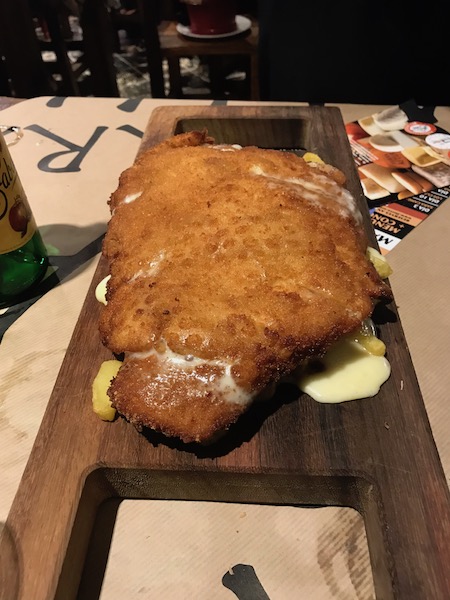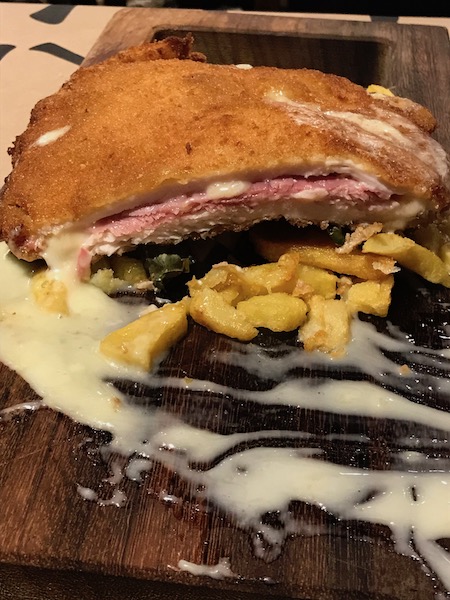Our Blog - Oviedo, Spain
Leaving San Sebastián, we followed the coastline for awhile before heading South to Oviedo. For much of the way, we either got to see mountains or ocean.






If you have never heard of Oviedo, don't feel bad. We hadn't heard about it until we watched an older Woody Allen movie called "Vicky Christina Barcelona". In the movie, they make a trip to Oviedo, and so we decided to drop through Oviedo to break the drive in two pieces. The name Oviedo originates from the Latin word for city (urbis) and is a reflection of the citys importance in the early history of Spain. During Spain's resistance against the Moors, Oviedo was quite literally the countries cultural, political and religious epicenter as it became the target destination of those seeking to escape the tyranny of the Muslim invaders. The city was founded in 761 by the monks of a religious order and its first building was the church of Saint Vincent. It became a capital city under the rule of King Alfonso.
Trivia: Fernando Alonso, the Formula One GP racing driver, is from Oviedo.
On to our little tour ... Plaza del Fontán, was formed in the 12th century by the peasants who came to the city in order to sell their products (milk, vegetables, cheese, chicken, etc.). Very soon, the plaza became the commercial center of the city suburbs. The look has changed over the years, with the current format coming in 1792. The name comes from the natural spring ('fontán') which formed a pool in the sunken ground on which the plaza was built. The square was surrounded by apartments and shops. However, it ended up deteriorating to such a state that it was demolished in 1997 and rebuilt with the same general look. It is now filled with cafes and creates a very cozy and relaxing atmosphere.

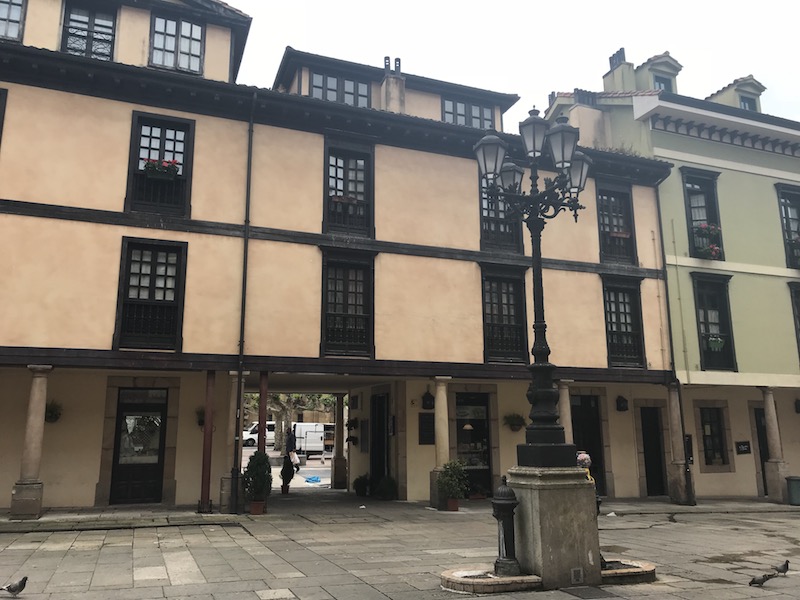
Around the corner is the El Fontán market, which takes its name from the plaza. It was built between 1882 and 1885 and looks like a very typical 18th or 19th century market building.
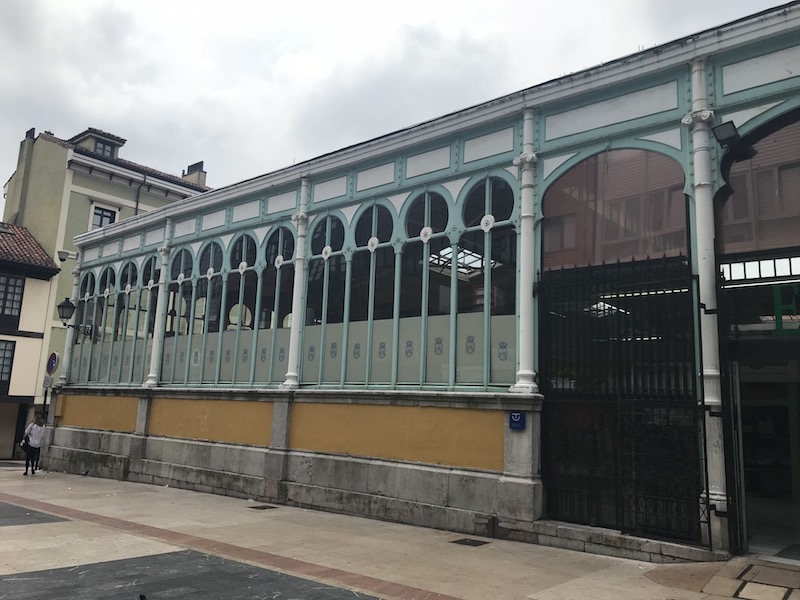
The Town Hall was built in 1622-1623 by the architect Juan de Naveda, and the building was restored and extended in 1939. The main door has a marble lion which in the 19th century, was in the fountain in the main Plaza Mayor square.
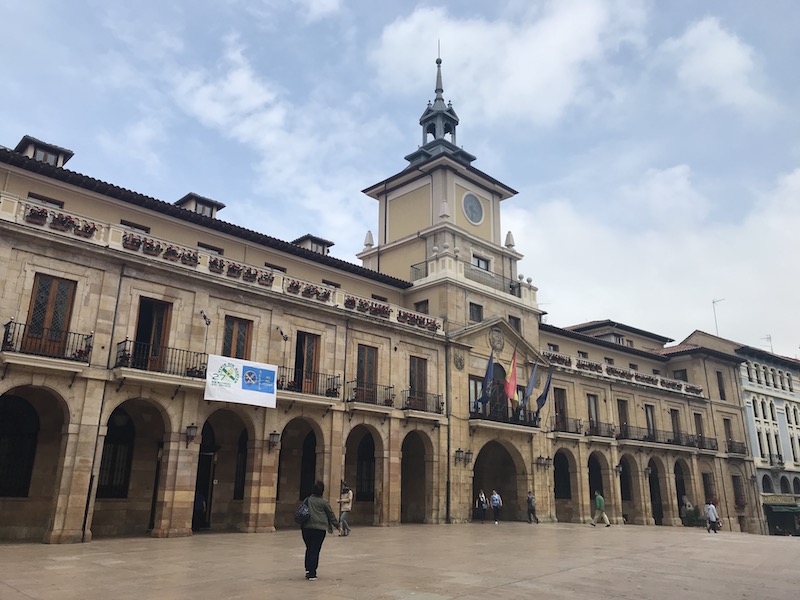
Iglesia de San Isidoro was opened in 1587 as part of a complex for the Jesuits of San Matias although the school was demolished in 1873. The present church building was constructed in neoclassic style with Baroque elements and features a tower on the south side of the structure. Originally, two towers were planned, but the plan didn't succeed.
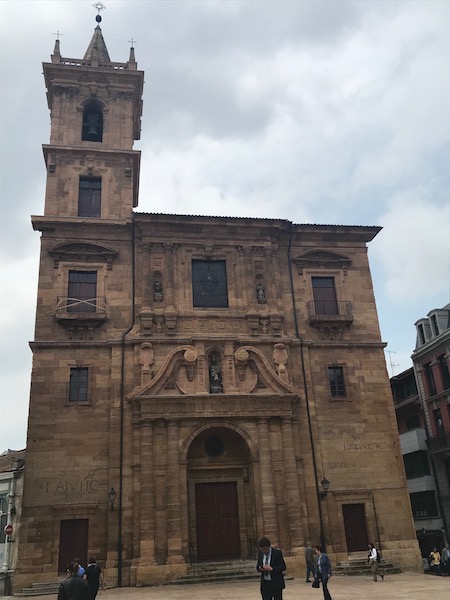
Oviedo is famous for featuring a lot of curious statues (over 100), sculptures and artistic compositions, each with a story. I grabbed pictures of a few, but there are many, many more. If you *HAPPEN* to be in Oviedo and are interested, GPSMyCity has 2 self-guided walking tours speifically for these Statues and their Squares: Oviedo Statues and Squares, Part 1 and Oviedo Statues and Squares, Part 2.
La Pescadera is a sculpture by Sebastian Miranda and it was installed at the entrance to Plaza del Pescado in 2005. The sculpture depicts the main heroine of the play "Saturnina Requejo, la Cachucha". It is known for its beauty and realism ... so much so that people say that from time to time, the Pescadera actually seems to wake up from her thoughts and start looking at passersby in surprise.
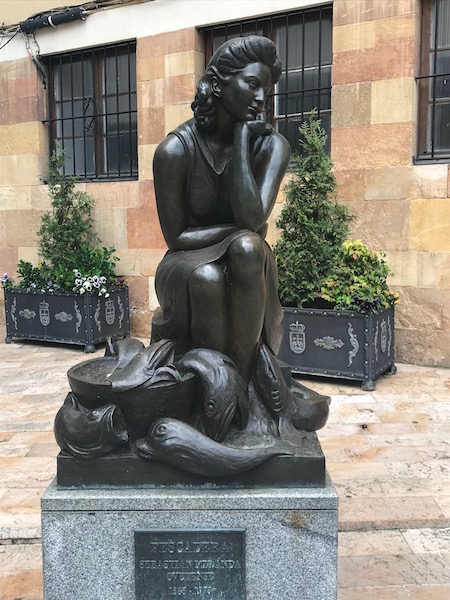
Nearby in Plaza Trascorrales (Plaza behind the Corrals, literally), is La Lechera by Manuel Garcia Linares. It depicts an old village woman, accompanied by a small donkey, selling milk. The sculpture is placed on the ground without a pedestal in order to be closer to the people and to create an impression that it is part of their everyday life.

Nicknamed 'The Traveler', this statue is called "El Regreso de Williams B. Arrensberg" (The Return of William B. Arrensberg), created by Eduardo Úrculo in 1993. The life-size statue stands in Plaza de Porlier, also just a little above ground level as to intermix directly with the passing people. He has his trench coat thrown over his shoulders, a fedora and umbrella, and is leaning on one of his suitcases, as if just arriving in the city. I have no idea exactly *who* William B. Arrensberg was or why he was immortalized by this sculpture.
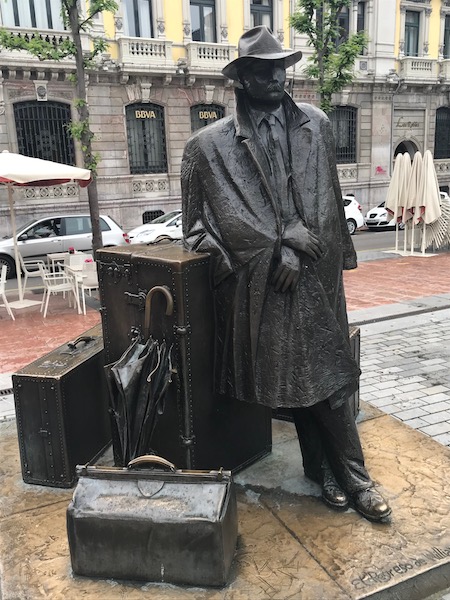
Plaza Pescado with the Old Pescado Building, this is the former fish market and is now a cultural center. The oval-shaped building is quite unique. If you look closely in the middle of the first picture, you can see another statue, this one being "Vendedor de pescado" (Fish seller) and depicts a typical fish seller, smoking a cigar and waiting for his next customer. The basket near the merchant is full of fish.
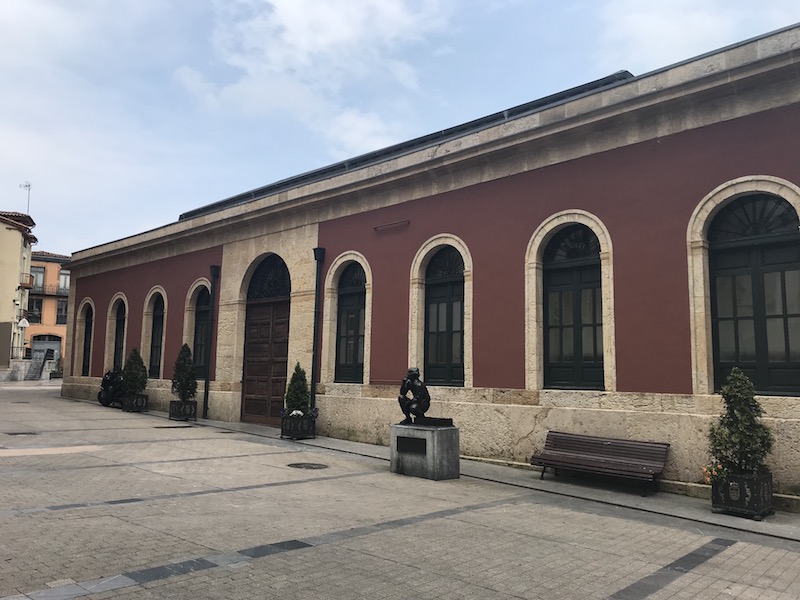
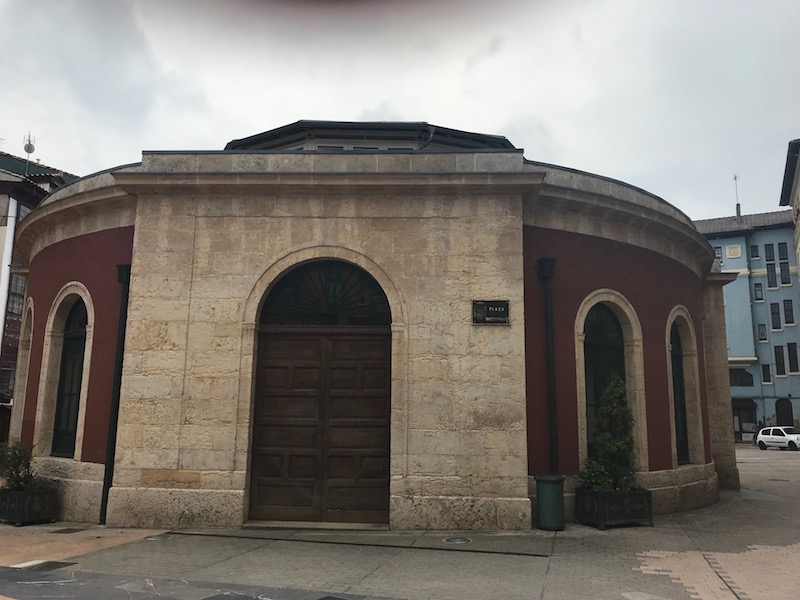
The Fine Arts Museum is housed in 3 buildings including this one, the Palacio de Velerde. It is a Baroque-style palace dating from 1765.
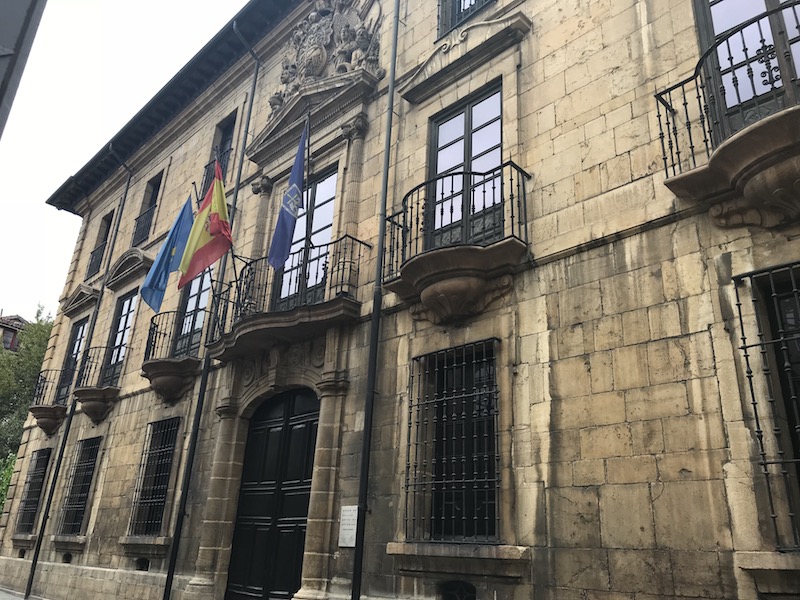

The palace of Valdecarzana-Heredia, which today houses part of the High Court of Justice, was built between 1627 and 1629. Near the top is the the Heredia coat of arms, showing Hercules fighting with the lion of Nemea and a mask, with the inscription of the year 1774.

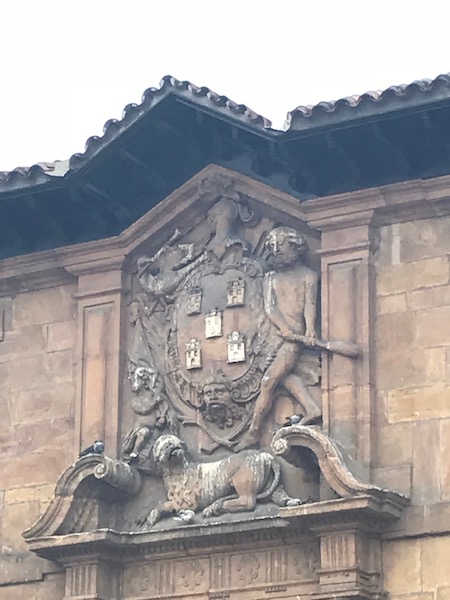
La Balesquida Chapel dates to the 13th century. It was founded in 1232 as the seat of the Brotherhood of the Balesquida and has been rebuilt several times. The current chapel dates to 1874 and is in a Baroque style. The exterior really doesn't look that church-like, and we couldn't go fully inside as it was closed for lunch (just the front door was open). There are three original altars dating back to the 17th century. One of the chapel's most valuable features is the image of the Virgin and Child, created in early Gothic style at the end of the 13th century.
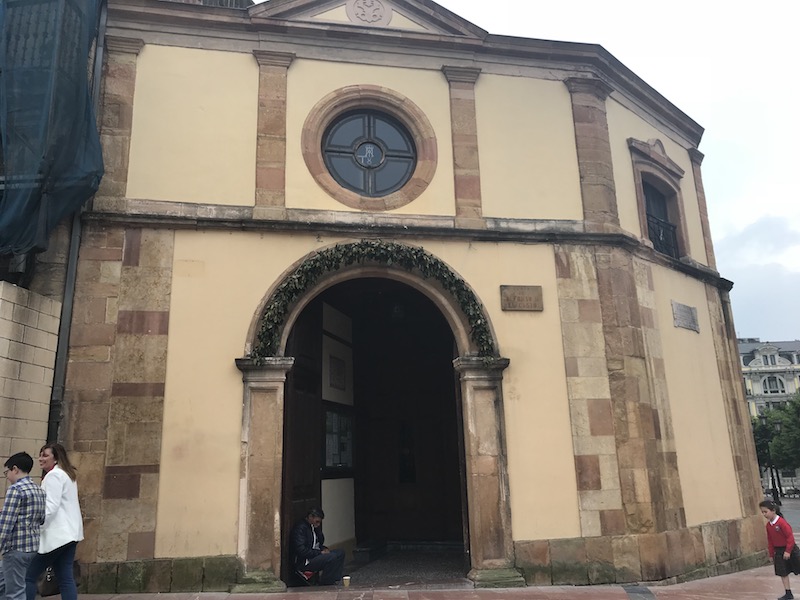
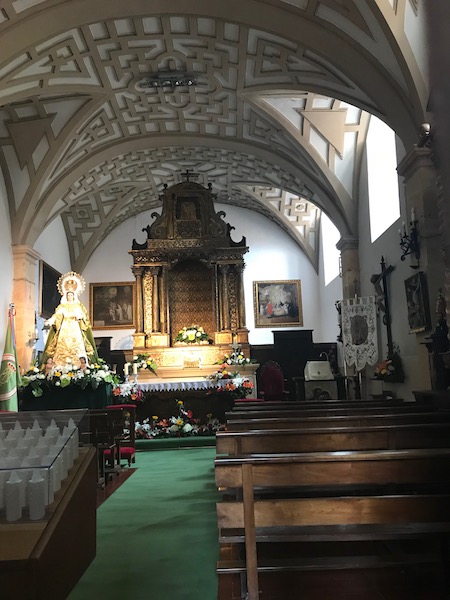

The Cathedral of San Salvador, or the Metropolitan Cathedral Basilica of the Holy Saviour sits (as with most old cathedrals) right in the middle of the old town. The cathedral displays an array of architectural styles: Pre-Romanesque, Romanesque, Gothic, Renaissance, and Baroque. The Cathedral was founded by King Fruela I of Asturias in 781 and enlarged in 802 by his son Alfonso II. While it still retains some Romanesque features like the Southern Tower, it is mainly a 14th-16th century Gothic building with both classic and flamboyant Gothic.
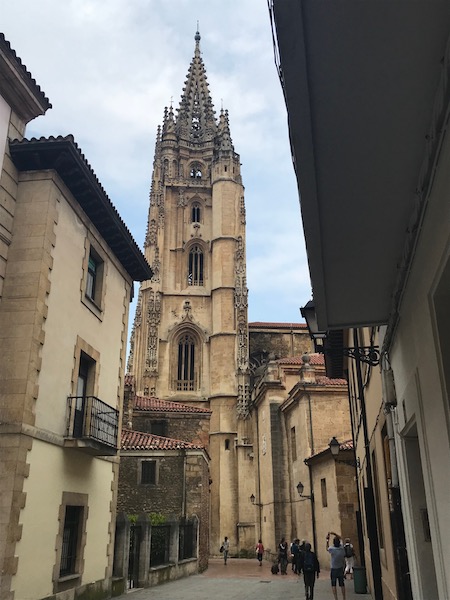
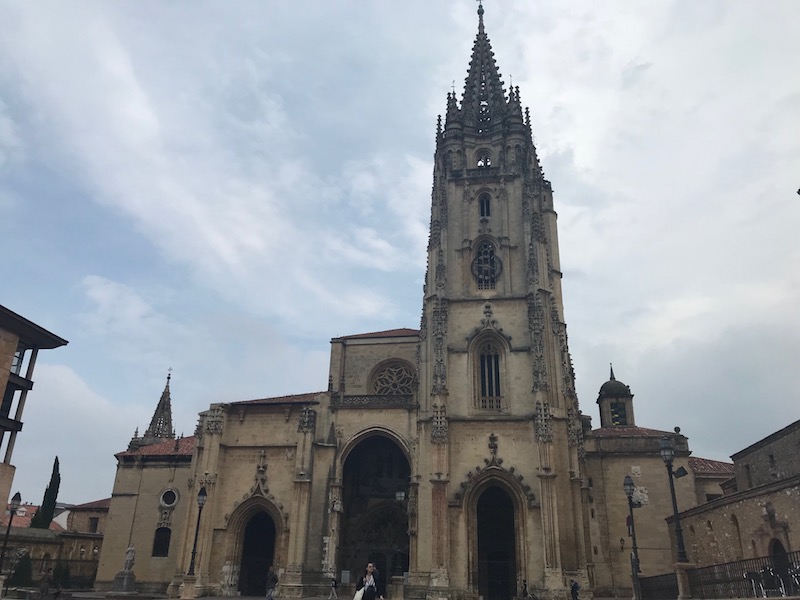
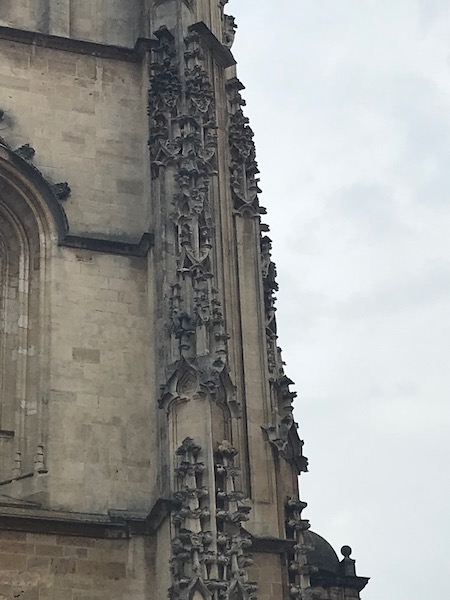

The naves were built in the 15th century once the choir was finished. We can see the progression of the constructive stages, with the sanctuary being a classical-Gothic work, whereas the naves present typical flame-like elements typical of a late-Gothic style. You may get a peek of the unique altarpiece, which I'll show details of later.
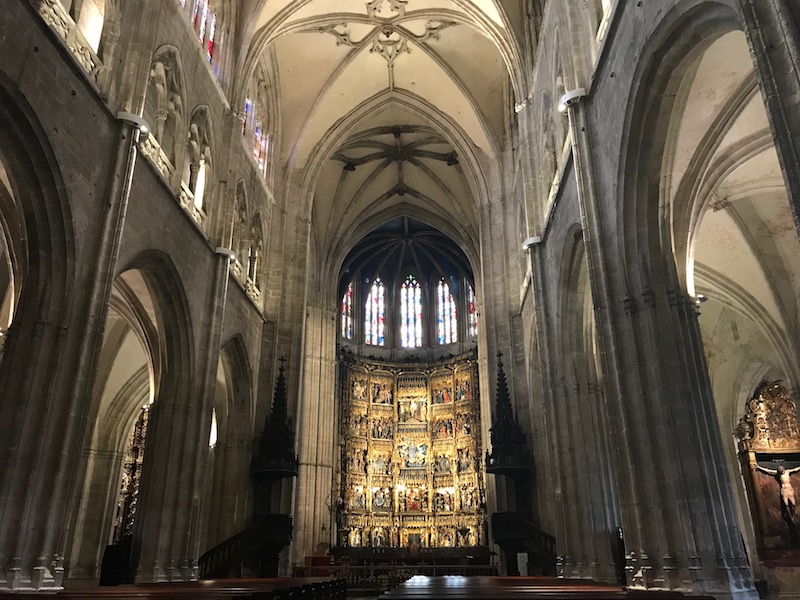
The Chapel of Saint Roque, also known as the Chapel of the Nativity, dates from the 16th century. It was ordered built to house the tomb of the abbot of Teverga. The altarpiece was done by José Bernardo de la Meana in 1658. You can tell it is Saint Roque from the typical attributes of the dog, and the would on his thigh (which is showing).
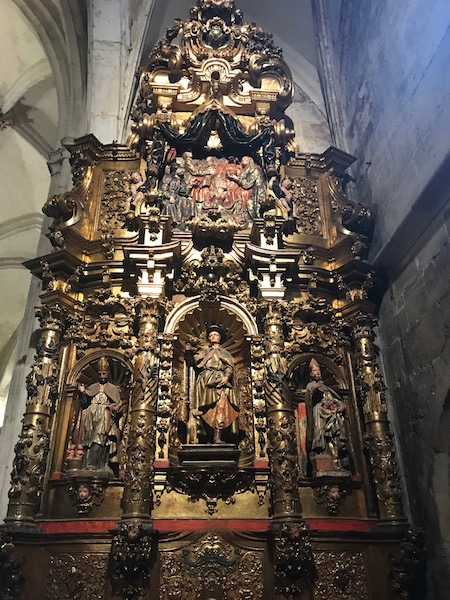
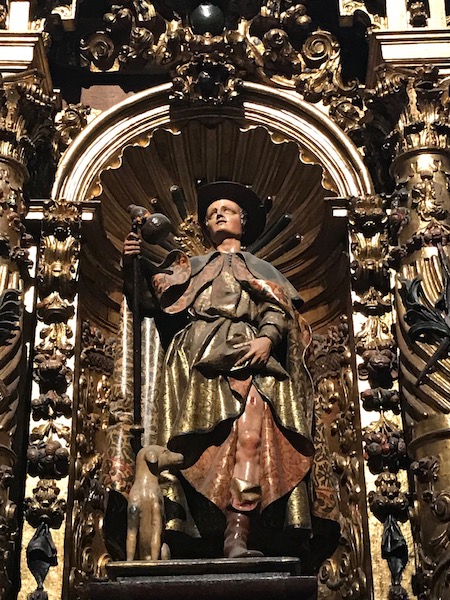
Saint Antonio de Padua Chapel is a Gothic-style chapel but it contains a Baroque altarpiece with Rococo elements, dating from the mid-18th century. Saint Antonio is shown holding the Infant Jesus
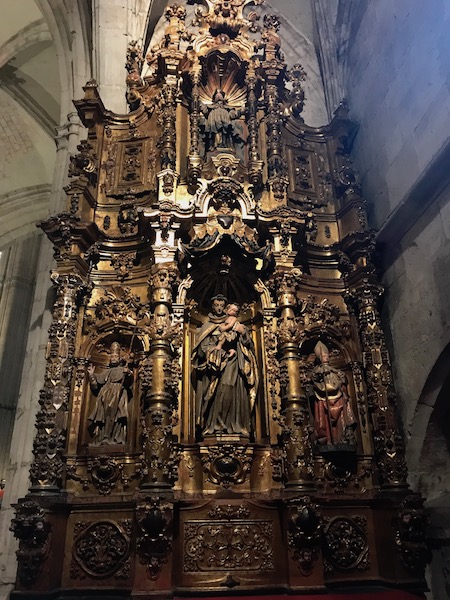
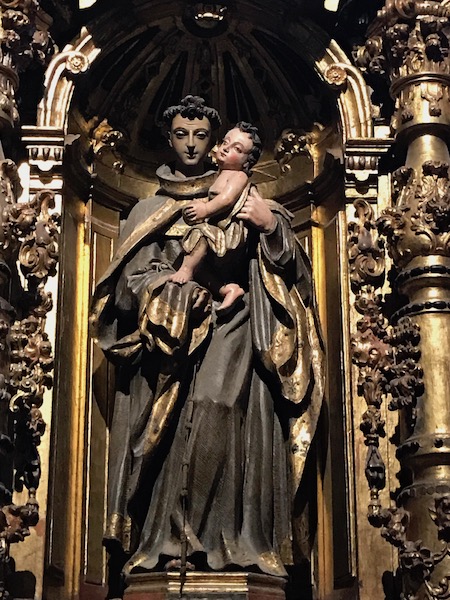
The masterpiece of the Cathedral (in my view) is the main altarpiece. It tells the story of the life of Christ in pictures (sculptures) in the Gothic style, with Flemish influences (called the Spanish-Flemish style). It was started in 1512 and finished in 1517. They say that this was constructed for "humble people" ... those who did not know how to read. So through these scenes, the "humble people" could understand the life of Christ. Probably the most important are the 3 main central ones (which are larger than the rest), showing the crucifixion, the assumption of the Virgin Mary and Christ in Majesty.
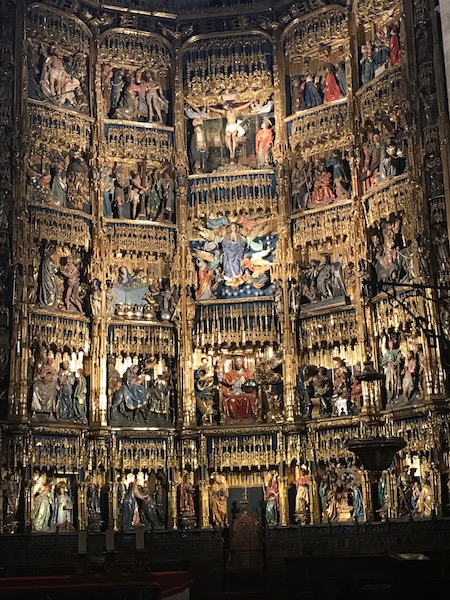

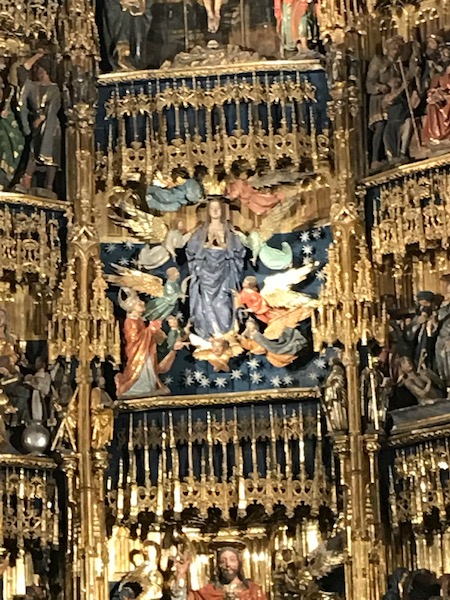
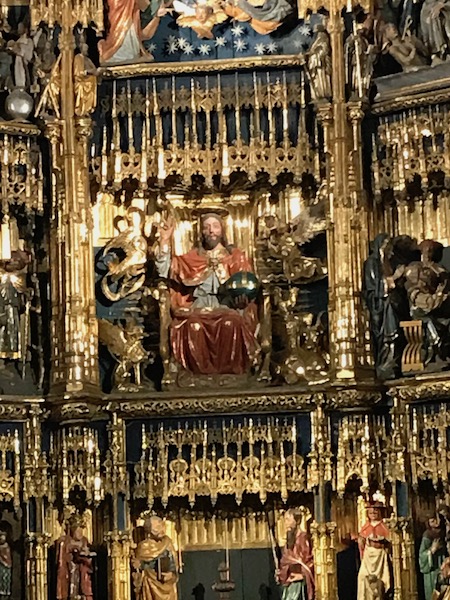
And a few more that I tried to get close-up to show the amazing detail.
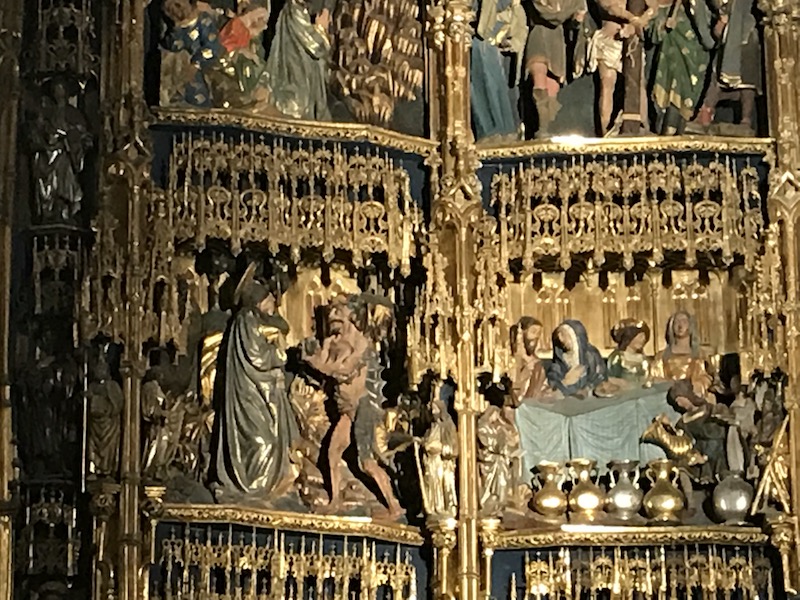
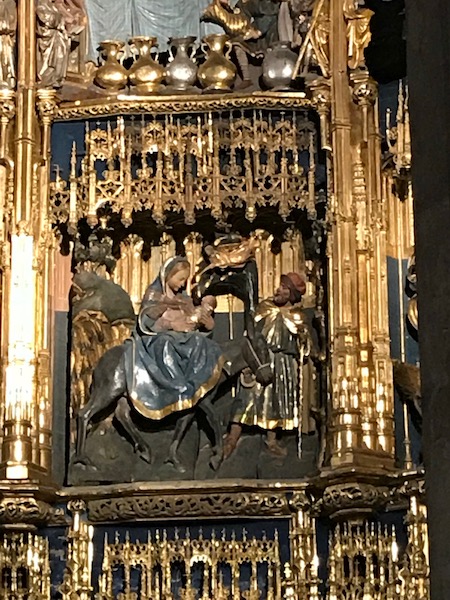
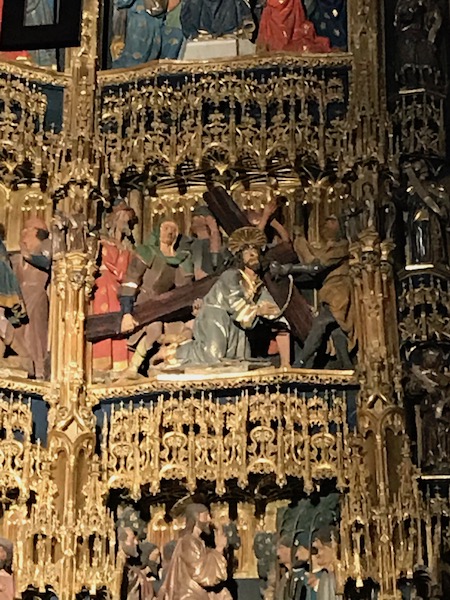
They also have a museum there with some interesting things, like this Book of the Testaments from the 12th century (1st pic) and another from 1561.
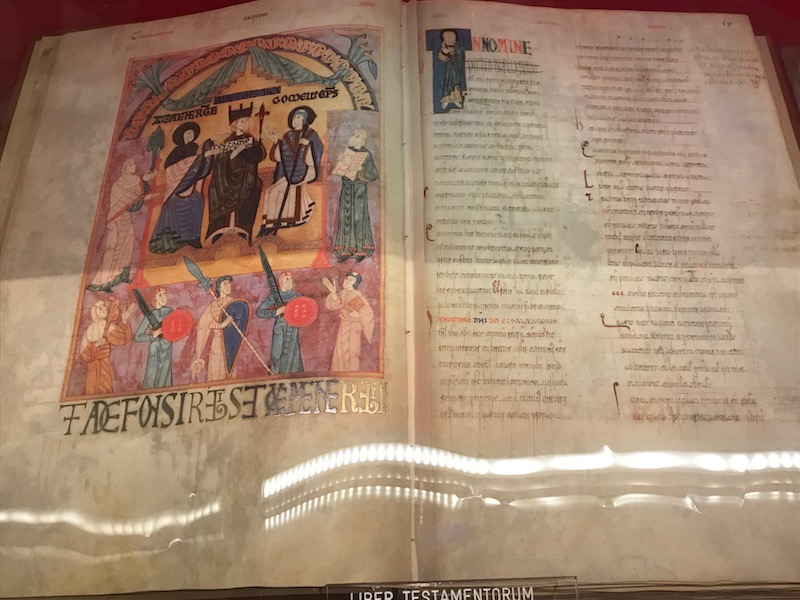
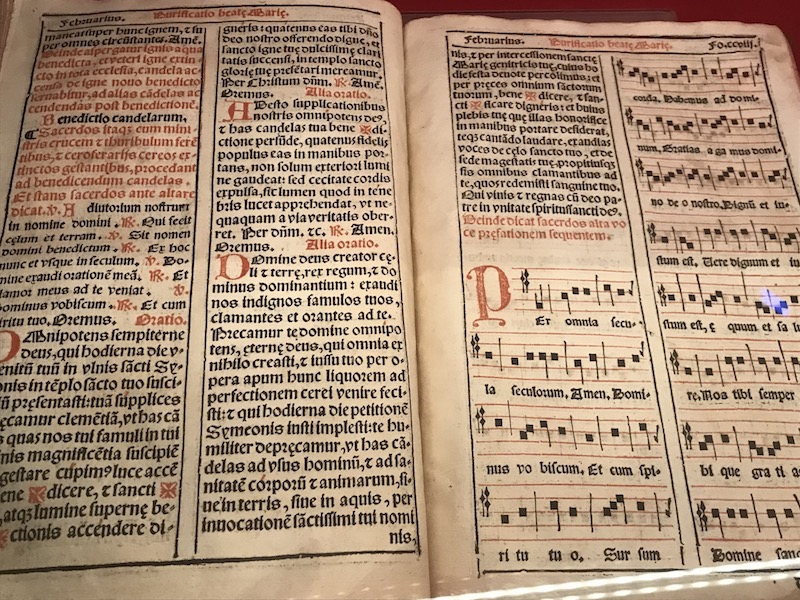
The classical-Gothic Cloister was started around 1300 and finished, along with the choir, around 1440.
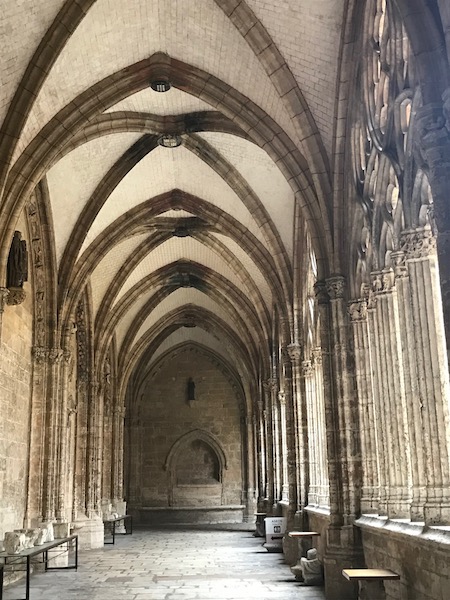
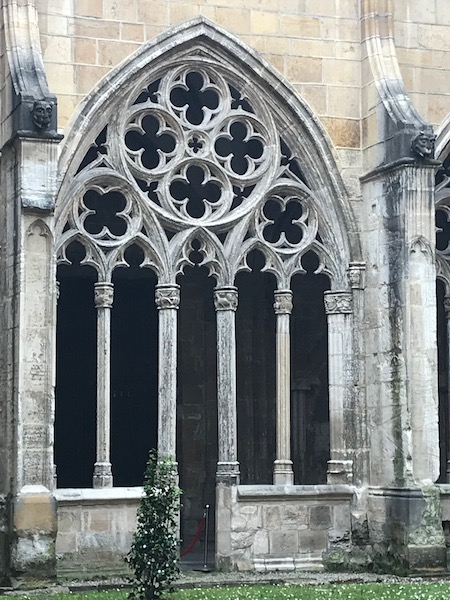
This is the altarpiece of Saint Teresa, again in a very Baroque style. I thought this had some of the best sculptures, so I had to take a few pictures.
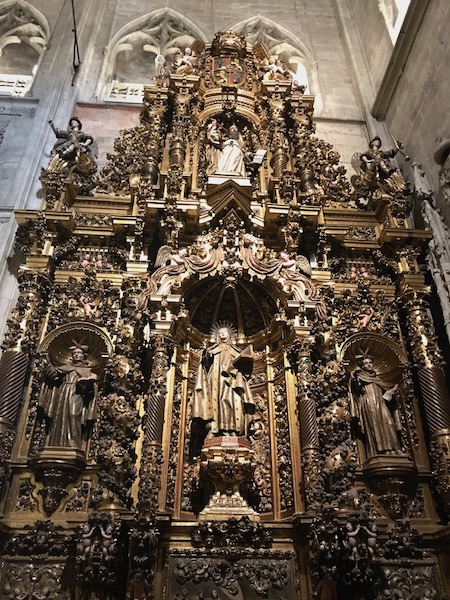
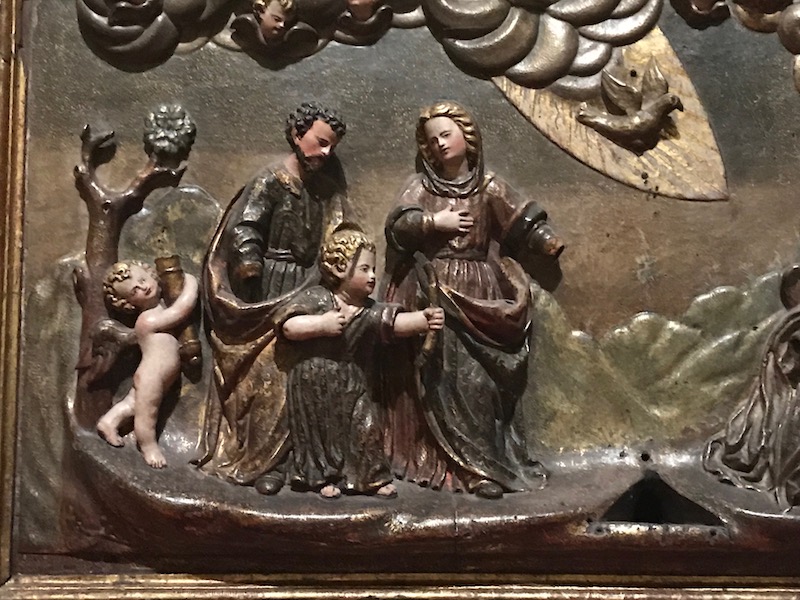
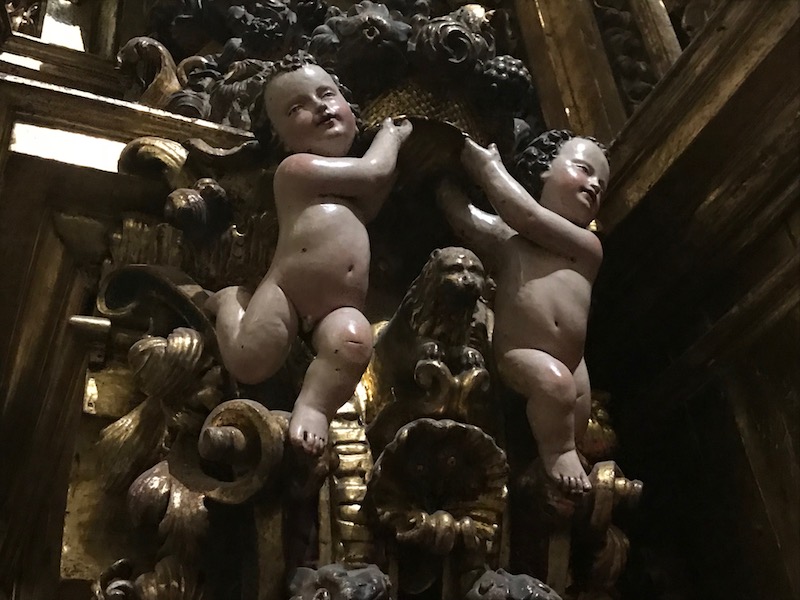
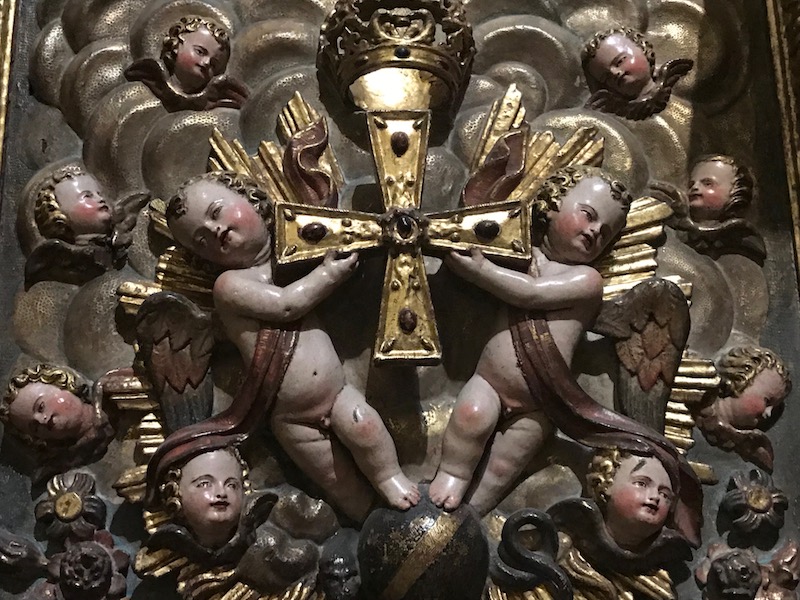
This is the Junta General or Parliament building of the Principality of Asturies. It was erected in 1910 as the Seat of the Provincial Government and the building represents French motives with a grandiose dome, balconies, arched windows and impressive doorways. The facade is crowned by male and female figures, representing science and labor.
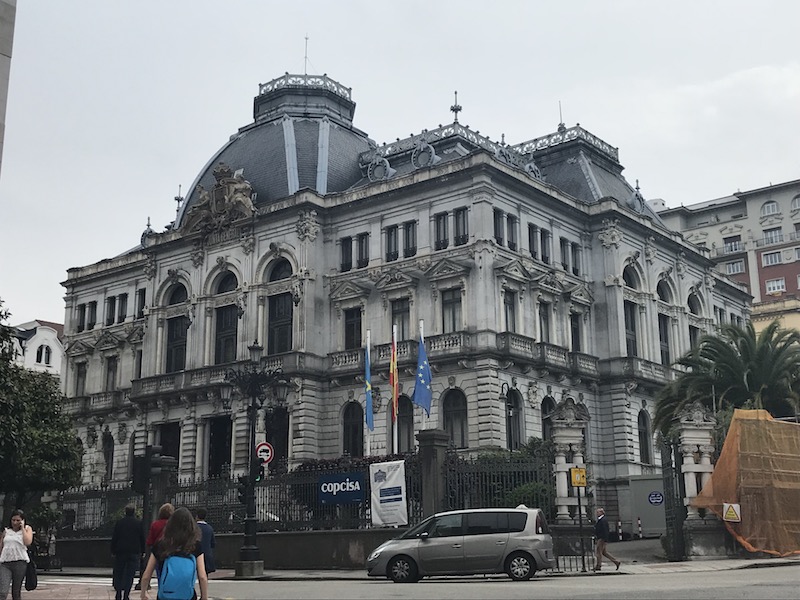
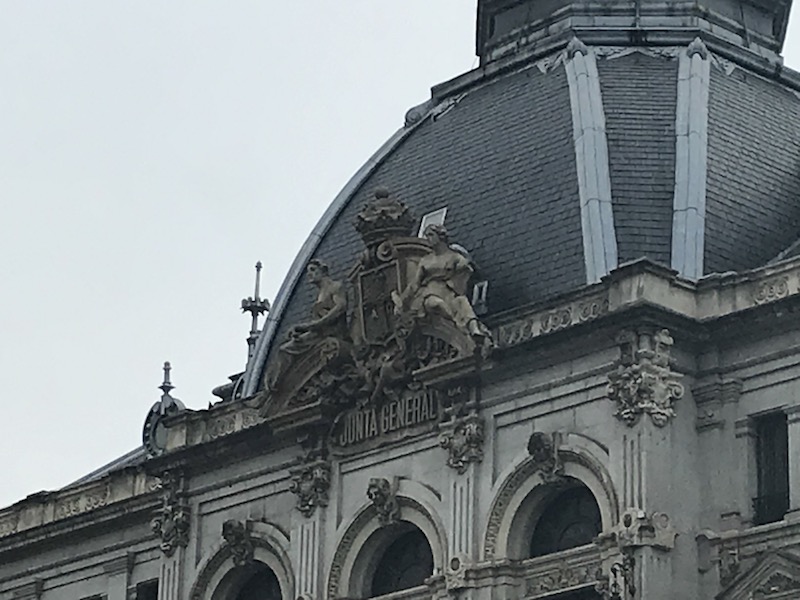
A life-size statue of Woody Allen has graced a plaza here since 2003 when he visited the city to collect the prestigious Prince of Asturias award. In 2007 and 2008, Allen filmed a part of the movie “Vicky Cristina Barcelona" here. An interesting side note: women's groups have asked the city hall to remove the statue although it was still there when we visited.
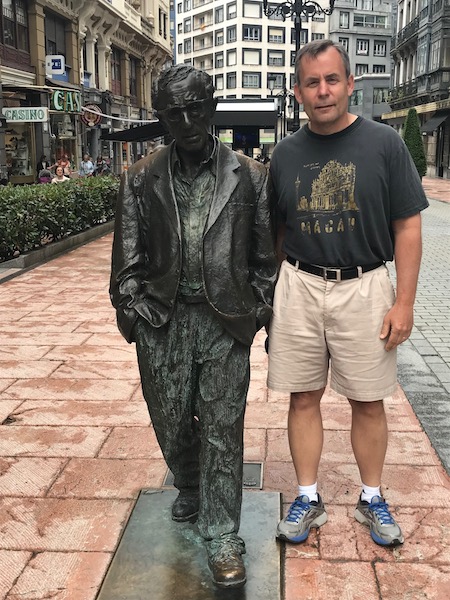
What you also may not know about Oviedo, is that it is the Spanish Cider capital! Knowing this, we had to have dinner at a Sidreria! The funniest part of the experience is being served the cider. A trained "escanciador", or cider server, takes the bottle with the right hand and lifts the arm above the head. With a straight back and a serious expression on the face (and normally not looking), the escanciador pours the cider from about 2 feet up in the air into the special glass, normally without missing and hitting the floor. The objective is to “break” the cider in the glass, giving it a quick injection of air bubbles, and you should drink the cider immediately after pouring.
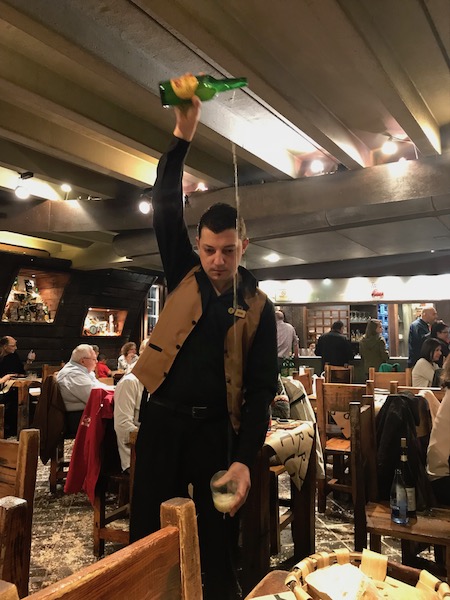

I'll start with the "we ordered WAY too much food!" but we had wanted to try some of the local specialities. First up was a block of local cheeses which included 5 different types but instead of a small taste, we basically could have eaten that and almost nothing else!

Then this, Cachopo (which is an Asturian cordon bleu) ... you take a veal escalope, stuff it with cured ham and local cheese, then bread it all. Cook it and place it all on top of a pile of french fries. You can see the cheese leaking out, and when cut, you can see the layers. We basically only ate 1/2 of it because it was just TOO BIG! Lastly, a traditional rice pudding dessert (yes, we saved enough room to share a dessert!).
